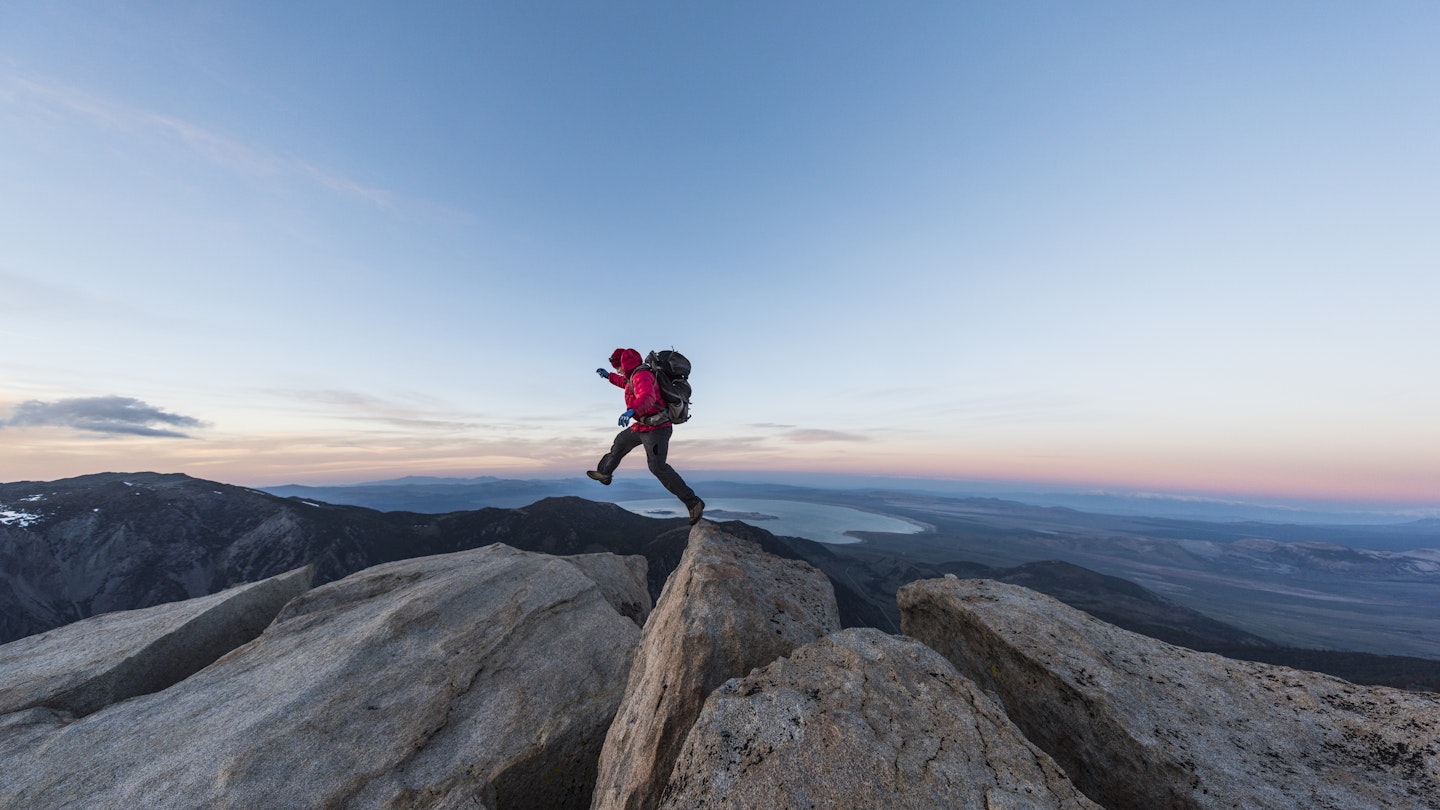Beginner’s Guide to Climbing Fourteeners
Mountains not only request, but demand respect. With feet of snow, hurricane-like winds, little oxygen, and their own weather, it’s remarkable we get windows into their world at all. Some are still unclimbed, while others invite us in.
If you are physically fit and just starting out as a mountaineer, here are a few ‘fourteeners’ – mountains higher than 14,000 feet (4,267 meters) – to consider for your first big climb. These summit attempts should not be attempted without proper safety precautions. All of these mountains can be summited by first-timers, but we recommend the assistance of a guide with proper training and experience.
Mount Whitney, California: 14,505ft
It’s the highest peak in the continental US, and a trail takes you to the top. A permit is required, and you’ll need to participate in a raffle to get one. However, for anyone who wants to start climbing and sharpen their skills, Whitney is a notable choice.
What to bring: Water. Unbelievably, there is no water on the mountain. You are exposed the entire hike up. Besides altitude sickness, dehydration is a serious threat to climbers.
Pikes Peak, Colorado: 14,115ft
In terms of accessibility, it doesn’t get any easier than Pikes Peak in Colorado. A 13.5-mile trail takes you up 7400 feet to the summit. Once there, you’re greeted with a road, a train, and 500,000 other visitors each year. There is no other 14er with the ease and safety margin of Pikes.
What to bring: A water purifier. There is water along the trail, but it needs to be sanitized before you take a sip. Again, dehydration is a concern at high altitudes.
Mount Kilimanjaro, Tanzania: 19,341ft
Tickling the 20,000-foot (6,000 meters) mark, it may surprise some that this mountain is even on our list. Rest assured – altitude is the greatest challenge on this mountain. Located in northeast Tanzania, Mount Kilimanjaro can be hiked without setting foot on ice or snow. A guide is required, and it will take you up to a week to reach the summit, but climbing Africa’s highest peak is on many climbers’ bucket lists.
What to bring: Your wallet. Climbing Kilimanjaro can cost between $2000 and $6000 depending on the guide. However, this investment goes towards experienced guides and maintaining Kilimanjaro National Park.
Mount Kenya, Kenya: 17,057ft
After ascending Kilimanjaro, why not jump across the border and tackle Africa’s second-highest peak? Mount Kenya, soaring to more than 17,000 feet, may be lower than Kilimanjaro, but it’s more challenging. With several different routes up this massif, the path you choose is up to you. Once at the top, the views are worth the effort.
What to bring: Camping gear is essential since any route will constitute a multi-day ascent. A tent, sleeping bag, and pad are necessary for this summit.
Mount Elbrus, Russia: 18,510ft
Situated in the Caucasus of southwestern Russia, Europe’s highest peak awaits the eager climber to scale her icy face. Rising over 18,000 feet (5500 meters), the thin air of this mountain will challenge any climber, whether a beginner or more advanced.
What to bring: Ice ax, crampons, and physical fitness are vital. This mountain demands strength and stamina to achieve the summit.
Pico de Orizaba, Mexico: 18,490ft
Mexico’s highest peak, Pico de Orizaba, presents a beautifully shaped cone piercing the heavens. Although the climb is relatively simple, a guide is highly recommended, alongside sufficient time to tackle its summit. Staying at the hut can facilitate an early morning ascent of North America’s third-highest peak.
What to bring: Physical stamina and a week or more of acclimatization training are crucial. It is advisable to undertake a few hikes to altitude in preparation for the summit.
Volcán Cotopaxi, Ecuador: 19,347ft
Situated on the equator, it’s remarkable that a mountain soaring past 19,000 feet exists there. Cotopaxi is a dormant volcano featuring a perfectly shaped cone to climb. With some mixed climbing requiring ice axes and crampons, this challenging summit will test your endurance.
What to bring: Some climbing experience and a camera for capturing stunning views. A guide is necessary for summiting, but the focus should be on enjoying the journey and taking memorable pictures.
Mount Rainier, Washington: 14,410ft
Mount Rainier is such an iconic setting it has its own National Park. Though it barely exceeds the 14,000-foot mark, this active volcano presents more challenges than many other peaks on the list. With proper preparation, the climb promises to be nothing short of spectacular.
What to bring: A portable stove is essential because you’ll need to melt snow for drinking water, making a Jetboil highly important for climbing Rainier.
Mont Blanc, France: 15,781ft
Europe’s second-highest peak, Mont Blanc, offers a prominent challenge for climbers. While the ascent to its summit is no simple feat, a guided trip will be achievable by most with adequate fitness. Ensure to plan ahead, as recent regulations have been established to control overcrowding on the mountain.
What to bring: A backpack filled with gear is necessary, ranging from trekking shoes to ice axes, rope, and crampons. This mountain demands comprehensive climbing skills.
Island Peak, Nepal: 20,305ft
Dubbed ‘the easiest 20,000-foot mountain in the world,’ Island Peak will certainly test your lung capacity. You won’t merely be walking up; the use of crampons and ice axes is necessary. However, it can be climbed by almost anyone who prepares adequately.
What to bring: Altitude sickness remedies are essential for this climb, as they could prove beneficial for every climb on the list, but are particularly necessary for Island Peak.
This article was first published on Oct 9, 2019, and updated on Nov 4, 2021.





